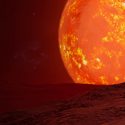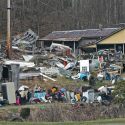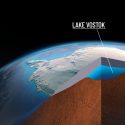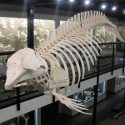One task, you have. Find Baby Yoda, you must. The tracking fob, guide you it will. Where, begin your search, would you?
It sounds like an easy task. But we wouldn’t be scouring the 50 million systems of the Star Wars Universe.
We’d be doing it in our own galaxy, the Milky Way. Searching some 100 billion planets, even in a starship equipped with a hyperdrive, would take you a lot longer than your human lifetime.
Maybe, to find Baby Yoda, you’d have to think like Baby Yoda. If you were a 50-year-old toddler with a taste for frogs, and the ability to lift a charging mudhorn into the air, where would you hide?
Would it be somewhere damp and foggy, and soaked with the dark side of the Force? A desert, maybe? Or something more Earth-like?
My feelings are telling me to start with the world of jungles and swamps. R2, set a course for Dagobah.
Baby Yoda could be all that’s left of Yoda’s kind. We don’t know where his species comes from, or even if they have a name. So why go to Dagobah?
This planet might be harsh and humid, but it’s a perfect place to hide from the Galactic Empire. But as far as science goes, a boggy planet, fully covered in marshlands, is hard to come by in real life. Bogs usually form in the lowlands, and require more than the few geographical features than Dagobah has.
Another impossible planet to find in the Milky Way would be the cold gas giant, Bespin. The gas giants we know of are mostly composed of hydrogen and helium. A planet like Bespin would be a poor source of any heavy elements for mining, and it would have an especially poor atmosphere for Baby Yoda to breathe.
You could spend millennia searching for a planet like that in the Milky Way, and never find it. But luckily for you, there are better places to look for this little creature with a high midi-chlorian count.
Our next stop would be a Milky Way version of Tatooine — Kepler-16b. In Star Wars, Tatooine is a hot, arid planet, that’s circling around not just one, but two suns.
Real-life circumbinary planets of the Milky Way, orbiting two or more stars, are even harsher than that. But because Kepler-16b lies just outside of the habitable zone, it’s most likely a cold, gaseous world the size of Saturn. And it most certainly doesn’t have what you’re looking for.
But desert planets are not that uncommon in the Milky Way. We have one right here in our Solar System. Desert planets could be hot, like Tatooine or Jakku.
They can also be cold, like Jedha or our own Mars. The only problem is, is that so far, we haven’t found any indication of life on those desert exoplanets. We don’t know if any of them could be inhabited by bacteria, let alone Yoda’s species.
And I would rather go somewhere more Earthly, like the equivalent of the Republic’s capital planet, Coruscant. There are candidate planets for a high-tech civilization to settle, right here in our galaxy.
One of them, Kepler-452b, is 1.6 times bigger than Earth, and it’s growing warmer every year. If any advanced life forms were to inhabit this planet, they would need to engineer the planet’s climate.
I doubt that Baby Yoda would enjoy a frozen wasteland like Hoth. Its equivalent in the Milky Way, a planet with the catchy name OGLE-2005-BLG-390Lb, has surface temperatures as low as -220°C (-364°F).
That’s nearly as cold as Pluto. But it could support life. Just not anything big and carnivorous like wampas.
Neither could a little one like the planet called CoRoT-7b, a volcanic planetary cousin of Mustafar. This lava world sits 60 times closer to its host star than the Earth is to the Sun. The temperatures on CoRot-7b reach as high as 2,200°C (4,000°F).
Maybe, you just have to look for the most adorable planet in the Milky Way Galaxy. Or maybe, you don’t have to go far at all. Scientists discover hundreds of new plant and animal species right here on Earth every year. I’m hoping that one day, they’ll discover Baby Yoda.
And I hope it happens before he turns 900. Maybe, you’ll even get a chance to hear his first word. I wonder if it would come right after the second one.
May the Force be with you always.
Subscribe to What-If on YouTube or follow the show on Facebook Watch.
Sources
- “Yoda’s species”. 2019. Wookieepedia. Accessed December 13 2019.
- “Solve it can you? Speak Yoda how to”. Bellos, Alex. 2019. The Guardian. Accessed December 13 2019.
- “Who Are The Mandalorians? | Starwars.Com”. Kelly Knox. 2019. starwars.com. Accessed December 13 2019.
- “Who (or what) is ‘Baby Yoda’ in The Mandalorian? Our wildest theories so far”. cnet.com. Accessed December 13 2019.
- “Star Wars: The Mandalorian – Baby Yoda Explained”. Megan Crouse, 2019. Den Of Geek. Accessed December 16 2019.
- “Could the Planets in Star Wars Actually Support Life?”. WIRED. Accessed December 16 2019.
- “10 Real Alien Worlds That Resemble ‘Star Wars’ Planets”. Chao, Tom. 2012. space.com. Accessed December 16 2019.
- “Alien World A Volcanic Nightmare”. Thompson, Andrea. 2010. space.com. Accessed December 16 2019.
- “Meet 8 ‘Star Wars’ Planets In Our Own Galaxy”. Brennan, Pat. 2019. Exoplanet Exploration: Planets Beyond Our Solar System. Accessed December 16 2019.
- “Are Star Wars-Like Planets Really Out There?”. Pat Brennan, Arielle Samuelson. 2019. Exoplanet Exploration: Planets Beyond Our Solar System. Accessed December 16 2019.



























